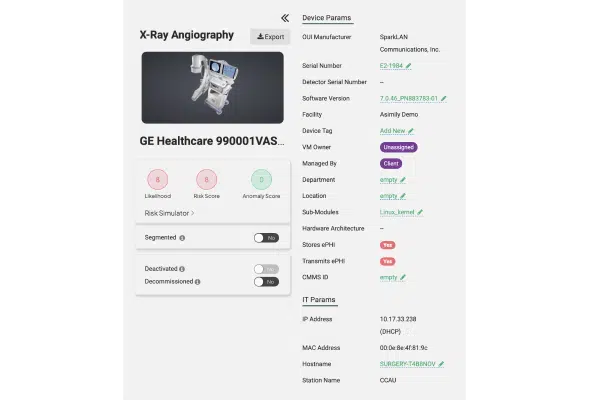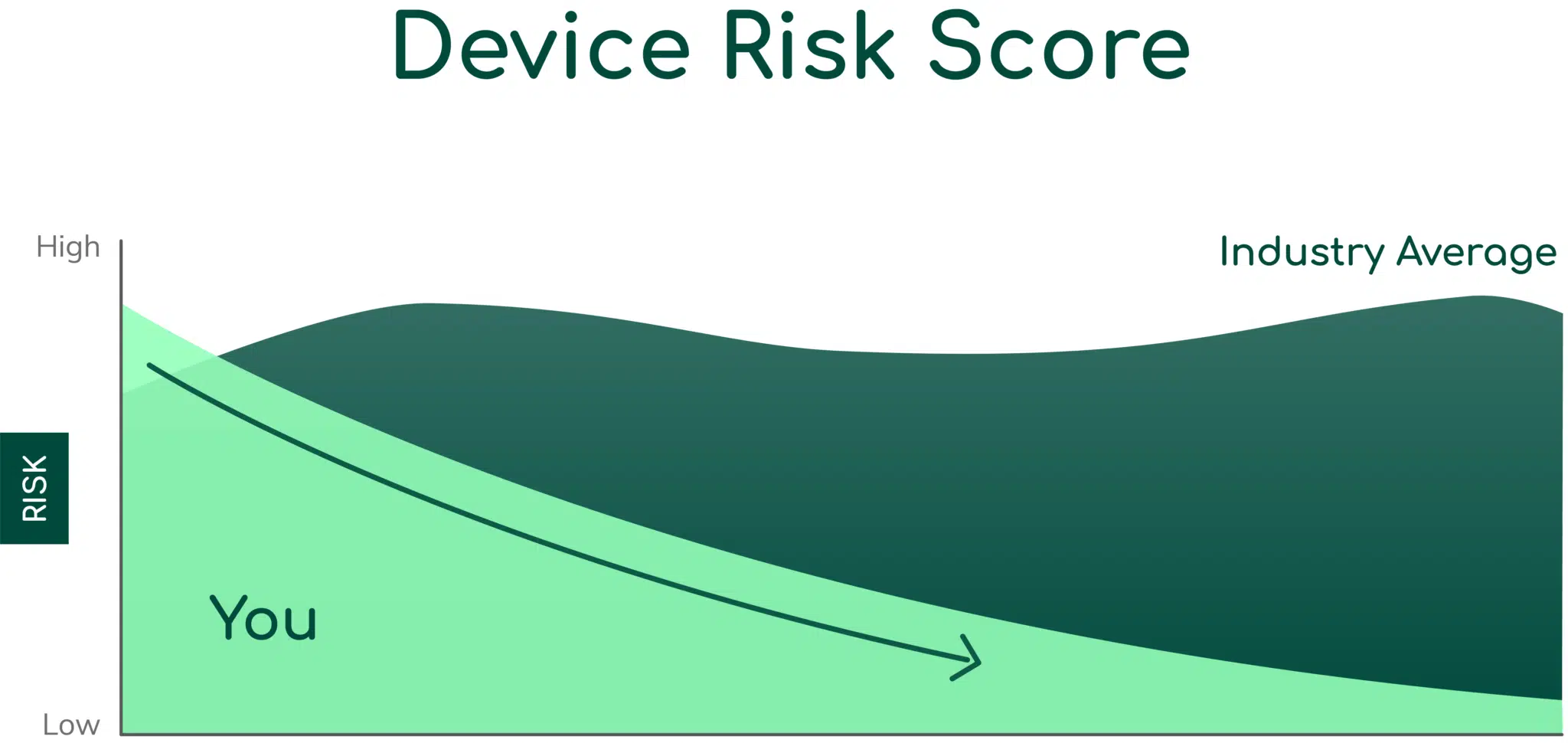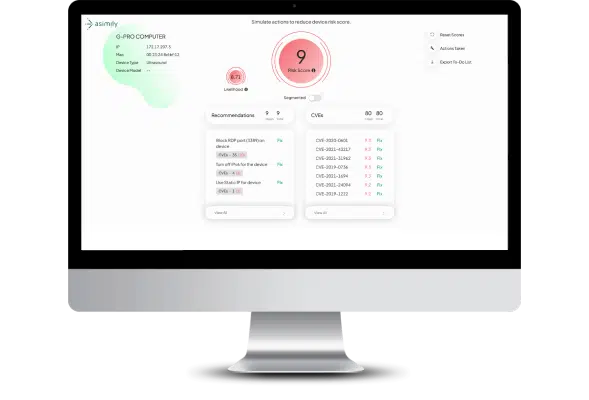IoT Cybersecurity Solution Offering
Reduce Vulnerabilities 10x Faster with Half the Resources

Features
Know Every Connected Device,
Vulnerability and Status
Gather accurate and precise information about all network-connected devices


Fast, Complete, and Safe Visibility
We identify devices safely based on their network traffic. With the industry’s best protocol analyzer, deep packet inspection (DPI), and AI/ML-based traffic analysis, our platform finds and classifies each device into a family, along with all apps, services, and connections.
Fully Integrated
To get the best possible inventory, Our platform augments its own passively gathered information across a variety of integrations including CMDB, CMMS, Vulnerability Scanners, and NACs to get to a simple, accurate inventory of devices and importantly – their topologic risk.


Deep Device Classification
Each device is classified into its family and/or sub-family for easier management of devices and networks. Customizable classification means each device is where you want it to be in your topology.
Protocol Analyzer
The world’s best protocol analyzer does in days what used to take weeks. Understand a new device’s behaviors and fingerprint it for cybersecurity uses. Whatever you need to buy, for any use, will be supported by our state-of-the-art protocol analyzer.

DEVICE VISIBILITY AND CLASSIFICATION
Unmatched Insights Into Networked Devices
Imagine having the ability to safely gather detailed information about the devices in your network. With SMSAM's IoT Cybersecurity Service, the vision becomes a reality.
Active directory accessment
We help you strategize your savings, assess various retirement accounts, and create income streams.
Active directory accessment
We help you strategize your savings, assess various retirement accounts, and create income streams.
Active directory accessment
We help you strategize your savings, assess various retirement accounts, and create income streams.

Help Center
Got a question?
Get your answer
Quick answers to questions you may have. Can't find what you're looking for? Check out our full documentation.
Inventory and visibility refers to the ability to have real-time visibility and accurate categorization of all hardware and software assets within an organization’s IT infrastructure. It involves maintaining a comprehensive inventory database, tracking asset details, and knowing the exact risk level and status of each asset at any given time.
IT asset management (ITAM) refers to the set of practices and processes used by organizations to track, manage, and optimize their IT assets throughout their lifecycle. It involves activities such as inventory management, asset tracking, software license management, maintenance scheduling, and financial planning related to IT assets.
1. Cost savings: By effectively managing assets, organizations can avoid unnecessary purchases, optimize maintenance costs, and extend the useful life of assets.
2. Compliance and risk mitigation: IT asset management ensures compliance with software licensing agreements, reduces the risk of security incidents, and helps organizations demonstrate readiness for regulatory bodies.
3. Improved productivity: Efficient asset management leads to better asset utilization, reduced downtime, faster incident response, and improved overall productivity.
4. Enhanced decision-making: Accurate data and insights from IT asset management enable informed decision-making regarding technology investments, upgrades, and decommissioning.
Inventory and visibility and IT asset management enhance security by:
1. Identifying vulnerabilities: Having a complete inventory of IoT devices helps organizations identify vulnerabilities and security risks associated with outdated or unsupported hardware or software.
2. Patch management: Accurate inventory visibility enables prompt application of security patches and updates for vulnerable assets, minimizing the risk of exploitation.
3. Incident response: Inventory visibility allows quick identification of compromised assets during security incidents, facilitating timely assessment and appropriate remedial actions.
4. Access control: Accurate asset tracking enables effective access controls, ensuring that only authorized personnel can interact with specific assets, reducing the risk of unauthorized access or data breaches.
